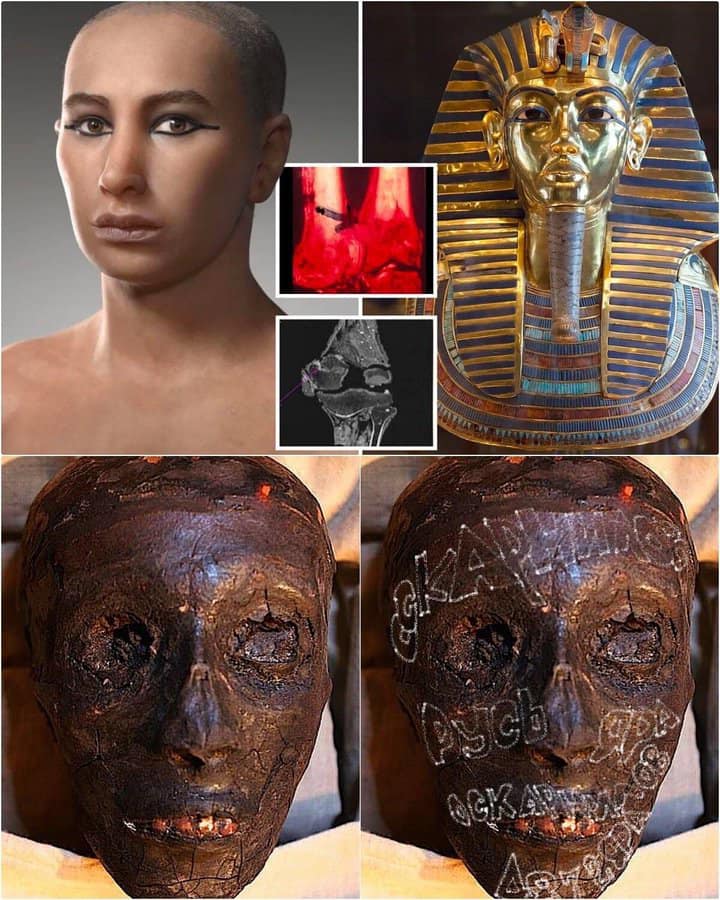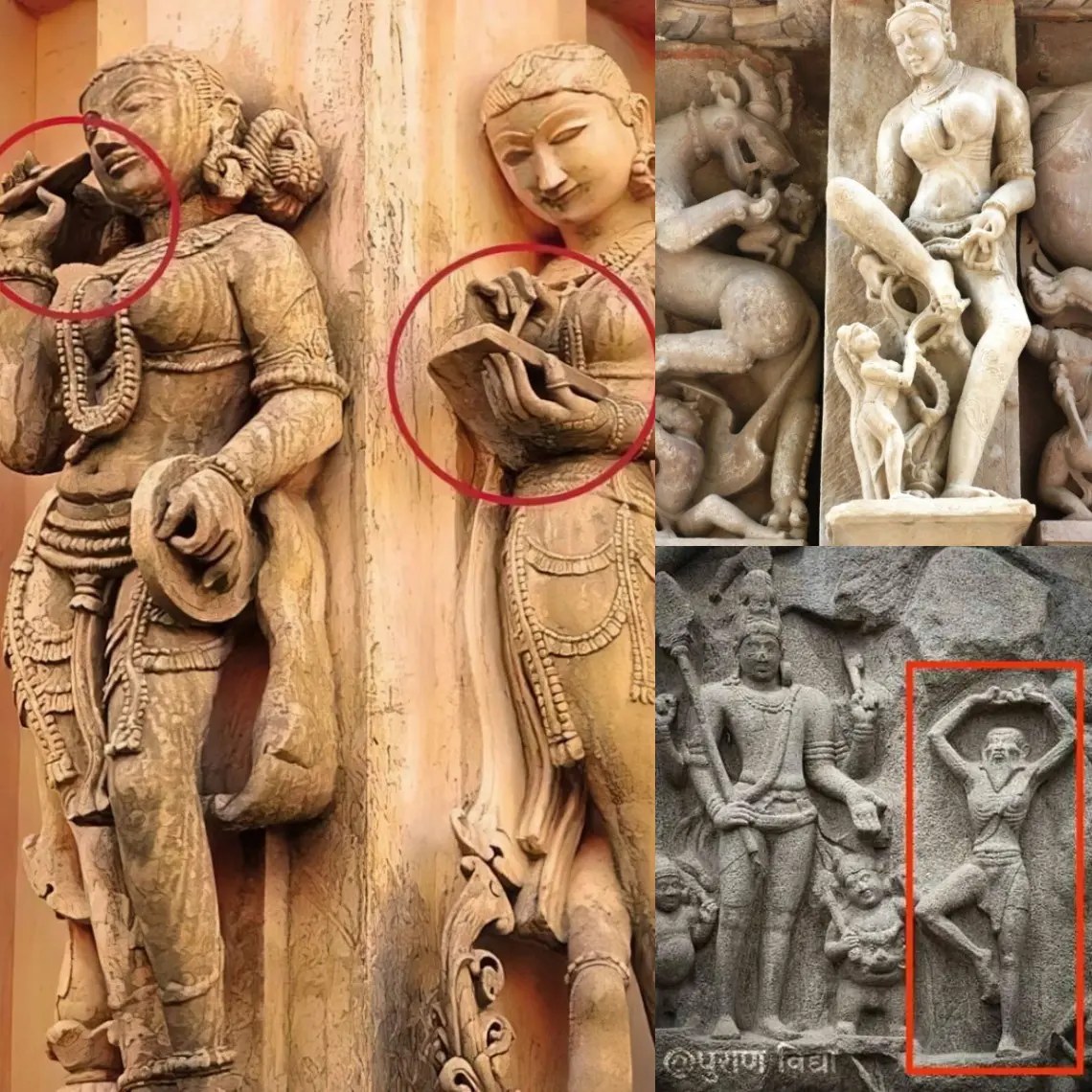Lost artefacts from sunken cities dubbed the Atlantis of Egypt are to be together for the first time after laying submerged for more than a thousand years.
Enormous statues, golden jewellery and hieroglyphic tablets which were feared lost forever have been reclaimed from the sea, and are to be put on public display later this month in a major exhibition by the British Museum.
The treasures belong to Heracleion and Canopus, cities built on the shifting ground of the Nile delta, which are now buried beneath 10ft (3 metres) of silt.

Reclaimed from the deeps: Diver Franck Goddio poses with an inscribed tablet he found in the ruins of Heracleion in Aboukir Bay, Egypt. The slab, which is 1.9m tall, will be one of the treasures on display at an upcoming British Museum exhibition of underwater treasures. It is inscribed with the decree of Saϊs, which levied a tax on imports from Greece
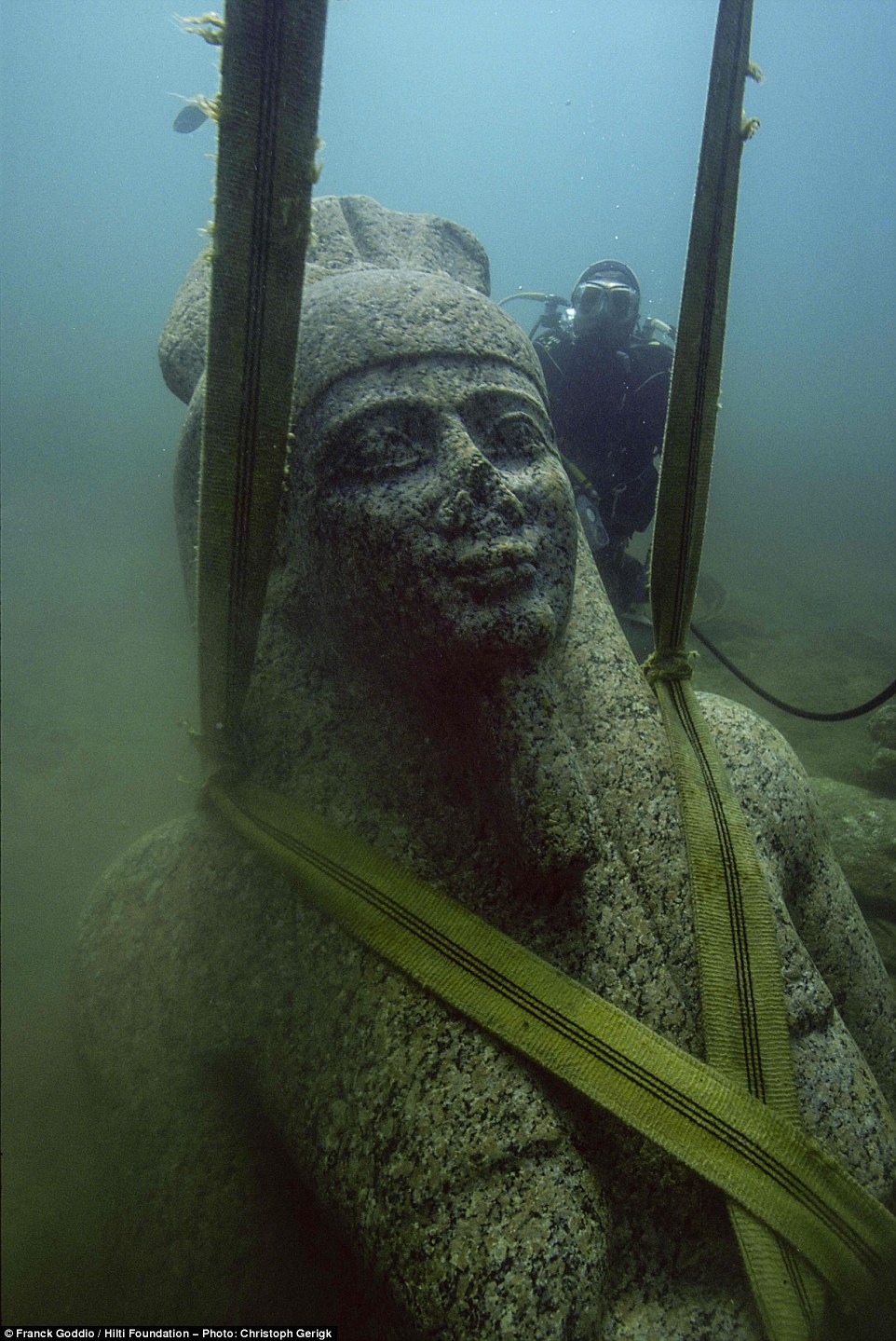
Strapped in: A diver secures a 5.4m statue of Hapy, a divine personification of the Nile floods, to be lifted out of the waters. The colossal red granite carving will one of the exhibition’s centrepieces. The six-tonne statue, which dates to the 4th Century BC is the largest known example of a Hapy statue

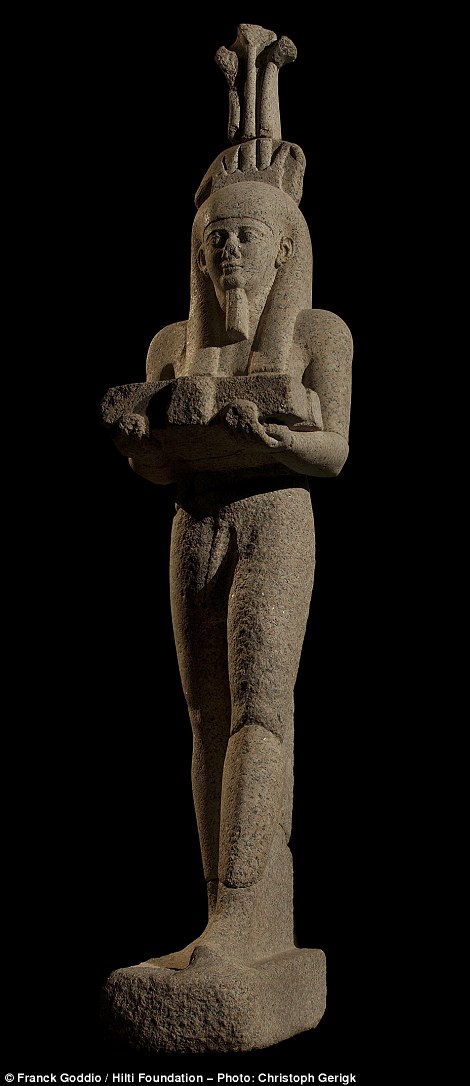
Preserved: The thick silt which covered most of the reclaimed artefacts helped preserve them from centuries of decay. Pictured left is a diver uncovering the Hapy statue, which stands restored at its full 5.4m height to the right
Ancient texts record the existence of the settlements, which were the gateway to Egypt before Alexandria rose to prominence. But the two trading hubs were lost – literally – to the sands of time until a chance discovery in 1996.
Divers in the mouth of the Nile unearthed the treasures, and have spent almost two decades since painstakingly dredging them out of the deep.
Highlights of the collection include a 6ft (1.9 metre) heirogylphic tablet inscribed with a royal declaration from Pharaoh Nectanebo I and a 5.4m statue of Hapy, an Egyptian god who personifies the Nile’s floods.
The exhibition, called Sunken Cities: Egypt’s Lost World, will run from 9 May to November.
It will combine items from the Museum’s own archives with items on special loan from Egyptian authorities, who rarely let the artefacts leave their country.
Around 300 items will be put on display, most of which were pulled from the sunken ruins.
The exhibition will focus on the mingling of cultures in the Nile delta cities, particularly the interaction between Egypt and Ancient Greece.

Sunken tablet: Hieroglyphic inscriptions, such as the one pictured above, will feature in the museum display from next May
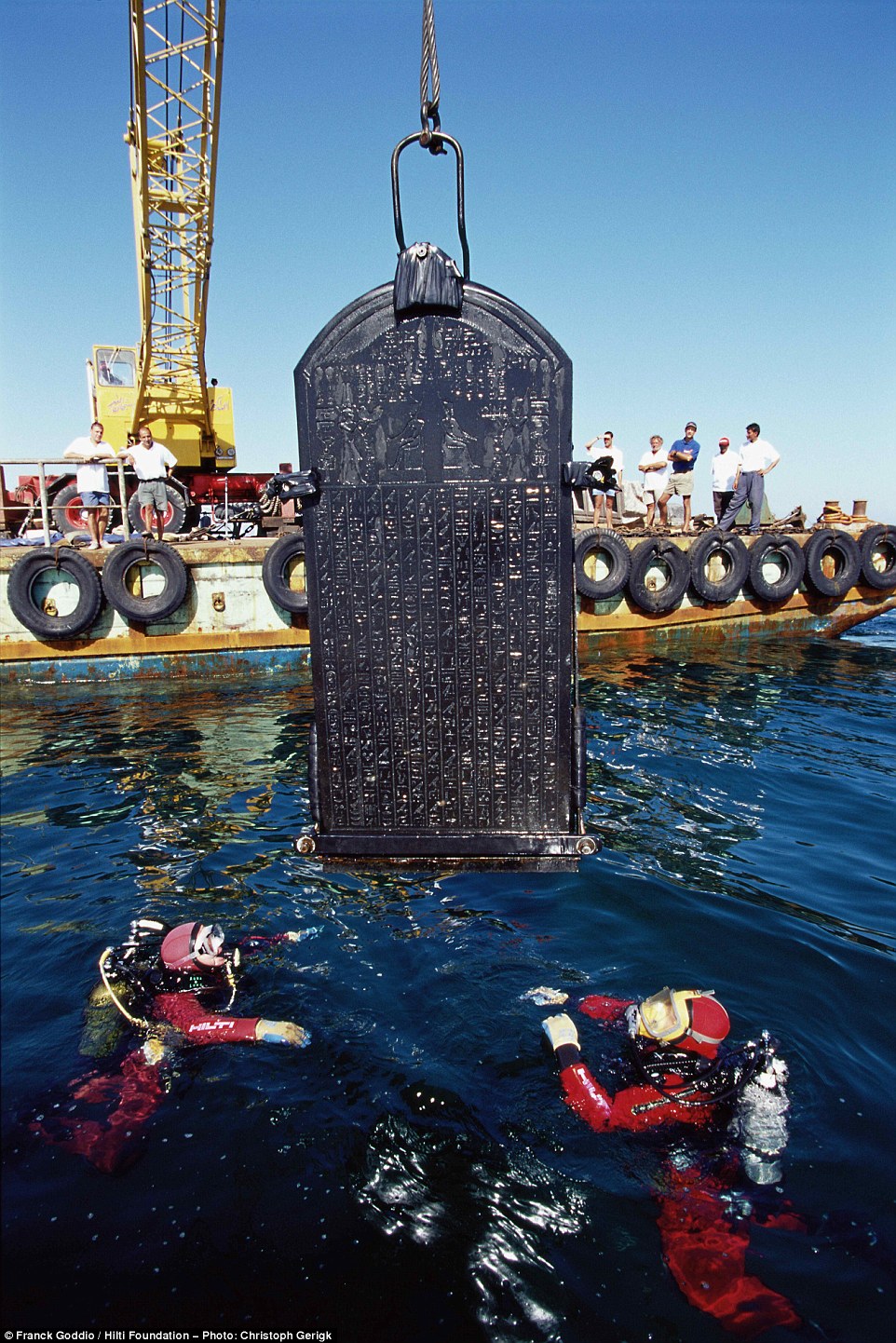
Reclaimed: The intact Stele of Thonis-Heracleion, is pictured being carefully lifted out of the Nile delta. The inscription makes clear that it was to be placed on the site of Heracleion, a city thought lost to the sands of time, and helped archaeologists be sure that they had found the right place
Other treasures on display will include a statue of Arsinoe II, a queen in the Ptolemaic dynasty which was founded after Alexander the Great conquered the country.
Franck Goddio, the president of the European Institutue of Underwater Archaeology and a co-curator of the exhibition, said: ‘My team and I, as well as the Hilti Foundation, are delighted that the exhibition with discoveries from our underwater archaeological expeditions off the coast of Egypt will be on display at the British Museum.
‘It enables us to share with the public the results of years of work at the sunken cities and our fascination for ancient worlds and civilisations.
‘Placing our discoveries alongside selected masterpieces from the collections of Egyptian museums, complemented by important objects from the British Museum, the exhibition presents unique insights into a fascinating period in history during which Egyptians and Greeks encountered each other on the shores of the Mediterranean.’

Heavy lifting: Divers manoeuvre a pink granite ‘garden vat’ discovered among the silty ruins of Heracleion

Digging deep: A diver brushes away remains from a cow’s jaw bone found at the site of Canopus

Golden: This necklace, a so-called pectoral decorated with lapis lazuli and glass, is another loan item from the Egyptian Museum which will be brought to London. The item dates from as early as 940BC and belonged to Pharaoh Sheshonk II


On display: These two life-size statues will also be on display – left is an Osiris, dating from the seventh century BC, which is being loaned from the Egyptian Museum in Cairo. To the right is a statue of Arsinoe II, a Ptolemaic queen, depicted as the goddess Isis
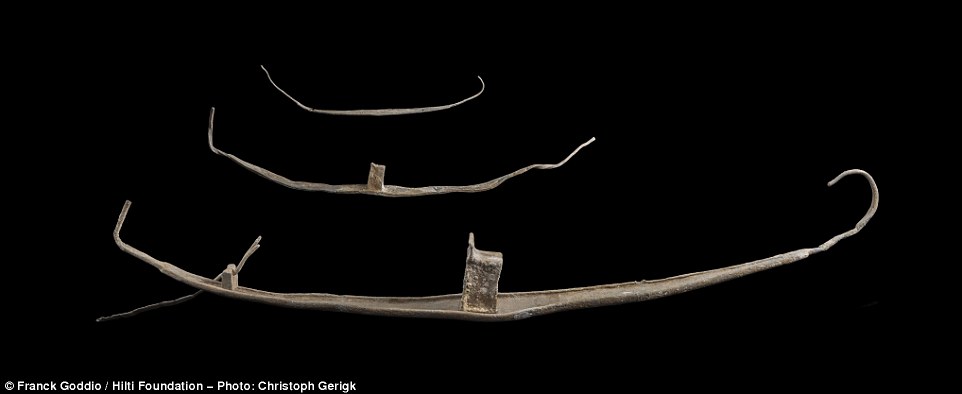
Gift for the gods: Divers also found several model boats, pictured above, which were metal replicas of tiny papyrus vessels which Egyptians would have set sail at the temple of Amun-Gereb as an offering
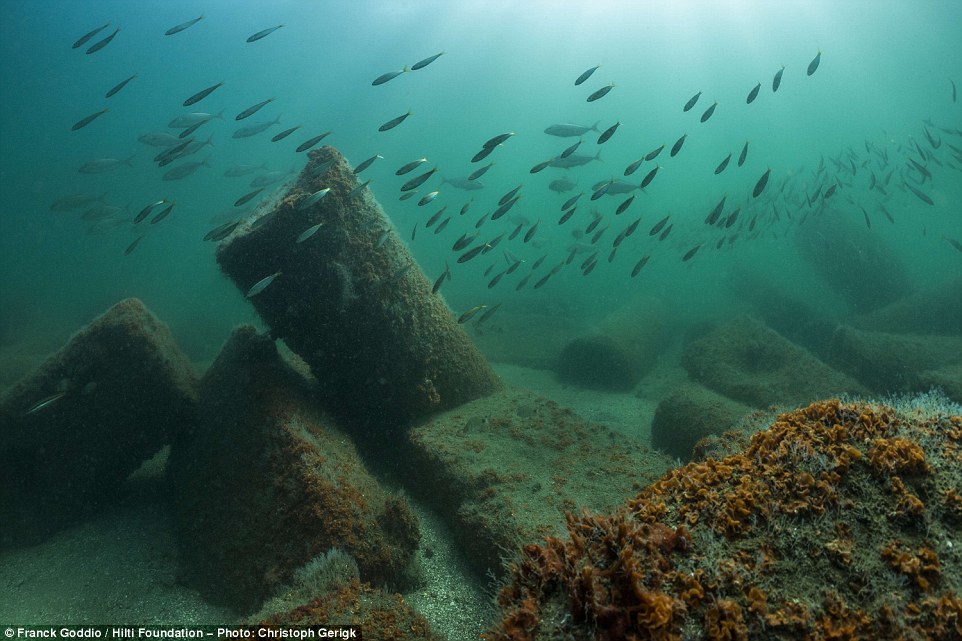
Sleeping with the fishes: Huge columns lay underwater in the ruins of Canopus, which were found 2km east of the Nile delta
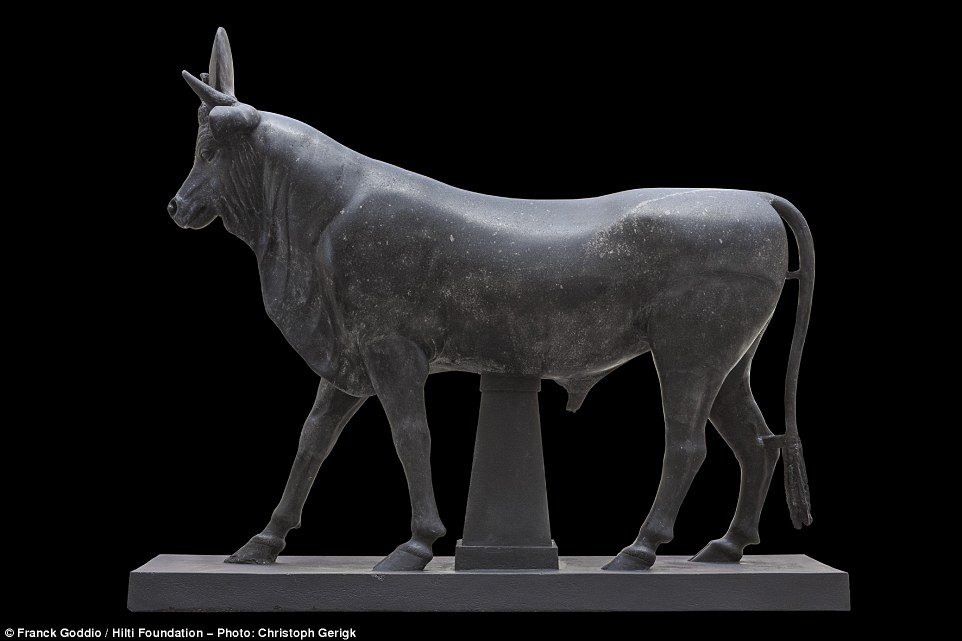
Added in: The exhibition will display items showing the mingling of Greek and Egyptian cultures. Pictured is a statue of the Egyptian bull god Apis dating the the reign of Roman emperor Hadrian. It will be loaned from the Greco-Roman Museum in Alexandria


Discovery: An Egyptian sailor watches over a Sphinx (left) dredged up from the Delta in 2001. Pictured right is an image of the god Osiris found in the dives
